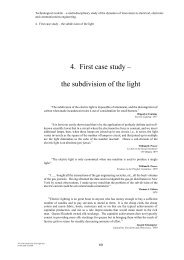Valuation Techniques for Social Cost-Benefit Analysis: - HM Treasury
Valuation Techniques for Social Cost-Benefit Analysis: - HM Treasury
Valuation Techniques for Social Cost-Benefit Analysis: - HM Treasury
You also want an ePaper? Increase the reach of your titles
YUMPU automatically turns print PDFs into web optimized ePapers that Google loves.
7 Conclusion<br />
This paper serves as a response to a growing appetite in Government <strong>for</strong> well-being and social<br />
impacts to be properly incorporated in to policy decisions. We have looked at three different<br />
approaches to valuing important policy impacts. These approaches can be useful <strong>for</strong> measuring<br />
values such as impacts on health, family and community stability, educational success, and<br />
environmental assets. This is important because these types of impacts do not have a readily<br />
available financial price, and can there<strong>for</strong>e be in danger of neglect in policy analysis.<br />
The paper has discussed the main issues associated with the application of each approach. In<br />
doing so it draws heavily on and provides a concise overview of the evidence from behavioural<br />
economics and psychology. This complements the Green Book and other Government guides on<br />
stated and revealed preference techniques. The paper also discusses the main challenges<br />
associated with the implementation of the life satisfaction approach to valuation.<br />
Traditional preference-based approaches have provided us with many valuations over the past<br />
few decades which we have been able to use in policy analysis. They have also frequently<br />
provided us with implausible estimates. The newer life satisfaction approach is, at the moment,<br />
providing us with valuations which look implausibly high, but we are also in the process of<br />
discovering more about what might be driving these implausible estimates and adjusting the<br />
methodology as appropriate. This paper discusses the current evidence relating to the approach.<br />
We have highlighted throughout, though, that even when valuations (and specifically those<br />
being generated currently by the life satisfaction approach) fail to meet the standards <strong>for</strong> direct<br />
inclusion in <strong>Social</strong> <strong>Cost</strong>-<strong>Benefit</strong> <strong>Analysis</strong>, they may still be useful in challenging decision makers<br />
to think more carefully about the full range of impacts of their proposed policies. And they may<br />
help decision makers to question the values that they may otherwise place implicitly on these<br />
impacts. Even where we cannot robustly place these absolute valuations <strong>for</strong> non-market goods<br />
alongside market valuations, they may still enable comparison of the relative value of different<br />
non-market goods.<br />
We now encourage departments to pursue further research relating to the valuation of nonmarket<br />
goods, and specifically subjective well-being measurement in order to deliver a step<br />
change in the way that previously ―hard to value‖ impacts of policy are accounted <strong>for</strong>.<br />
53





![AIRTO [Professor Dr Brian Blunden] - HM Treasury](https://img.yumpu.com/15492848/1/184x260/airto-professor-dr-brian-blunden-hm-treasury.jpg?quality=85)










